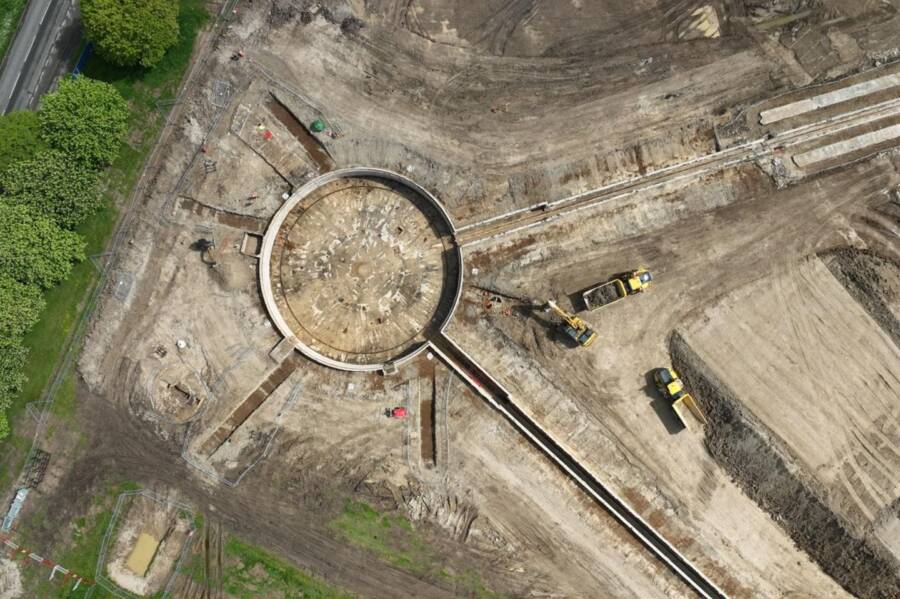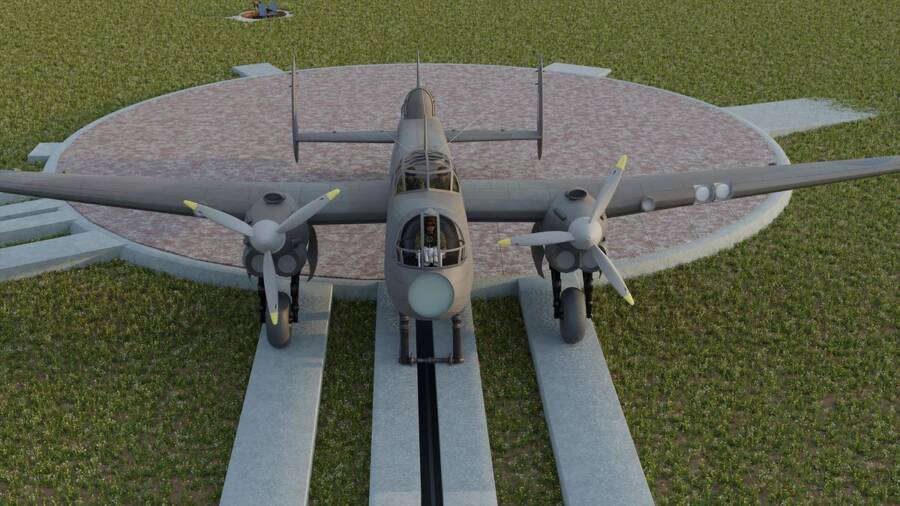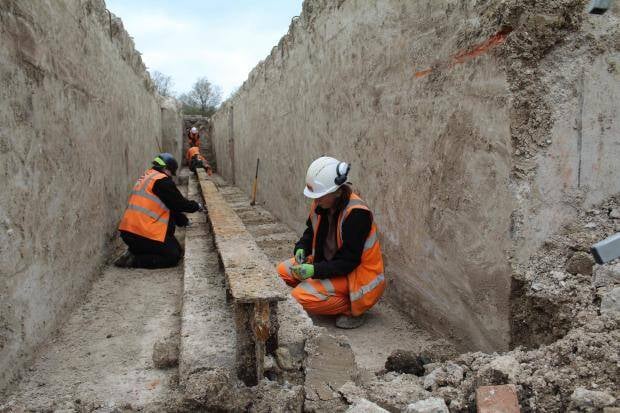The catapult prototype, although never used, led to the development of similar systems that became common on ships during World War II.

MOLAThe remnants of the catapult were discovered by archaeologists excavating the area for construction.
Remains of a World War II-era catapult, designed to launch bomber planes into the air, were recently found in Oxfordshire, England.
Archaeologists from the Museum of London Archaeology (MOLA) were excavating the area before the construction of the new Harwell Science and Innovation Campus when they uncovered the Royal Aircraft Establishment (RAE) Mark III catapult structure.
The catapult, built between 1938 and 1940, was designed to shorten the runway length for bomber planes, making them more fuel efficient. The runways used with the catapult were just 269 feet long, compared to the length of a normal runway for a bomber plane, which would have been more than 6,000 feet, according to Live Science.
The design of the catapult featured a turntable with 12 Rolls-Royce Kestrel aero engines underneath. The engines compressed air, sending the plane down the short runway and into the sky.
“High-pressured air was… forced into the pneumatic ram, which rapidly expanded to the length of the guided track — literally catapulting the large bomber planes,” according to a statement from MOLA.

MOLA3D renderings of the catapult system show what a plane may have looked like using it.
“This fascinating structure reminds us of the rapid experimentation and innovation of the interwar years and World War Two,” said Susan Porter, MOLA project officer, in the statement. “Crucially, recording the location and appearance of every inch means that the catapult is preserved by record for future generations.”
Archaeologists with MOLA have created a digital 3D model of the catapult, showing how it would have worked, which can be viewed online.

MOLAArchaeologists excavating one of the catapult’s arms.
The Mark III catapult was a prototype, and it was never actually used to launch a plane due to engine issues with the catapult and the design not fitting the aircraft it was meant to launch.
While the Mark III catapult may not have launched any planes itself, the design did serve as a model for other catapult systems that British military forces used during World War II.
The German military had fighter planes that had a remarkably long range, allowing them to operate outside the range of British land-based fighter planes. The German Fw 200 planes would order U-boat attacks on ships it surveilled or sometimes even drop bombs themselves onto unsuspecting British ships with little recourse.
To counter the advantage these Fw 200s gave the Germans, the Royal Navy developed CAM ships fitted with a catapult to launch a single fighter jet — a Hawker Hurricane, a single-seat fighter aircraft dubbed a “Hurricat” or “Catafighter.” The plane would be ditched in the ocean after combat.
Between 1941 and 1943, there were eight combat launches from CAM ships, resulting in the destruction of eight German planes. One more was damaged, and three were chased off.
The CAM ships were discontinued as escort carriers, which could carry more planes and were fitted with hydraulic catapults, became commonplace. The escort carriers, known as CVEs, were the first ships to normalize catapult launches rather than use them as an emergency measure.
After reading about the World War II catapult found in England, read about the wreck of a World War II fighter plane found after a walk on a British beach. Or, read about World War II pilot Erich Hartmann, the deadliest fighter pilot of all time.





